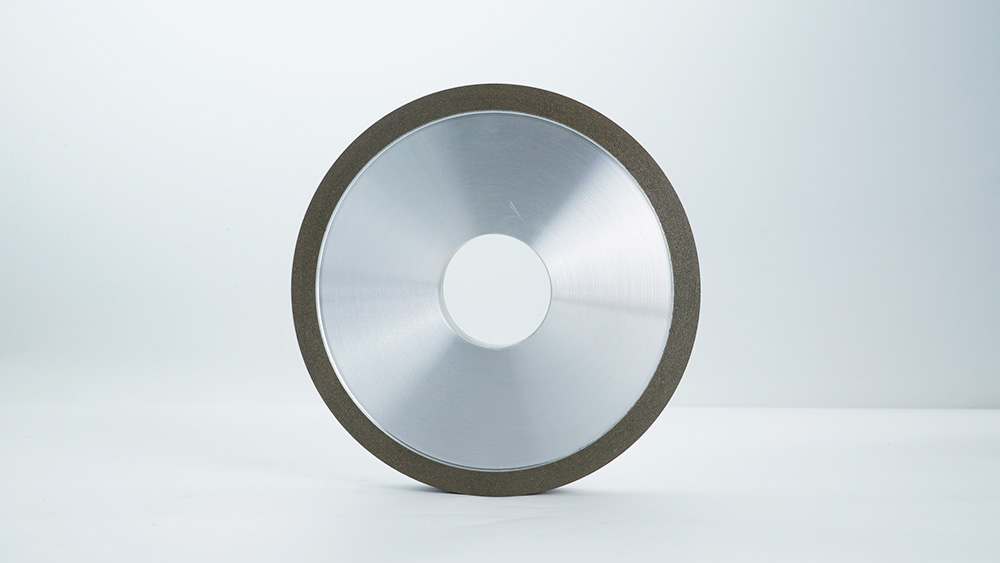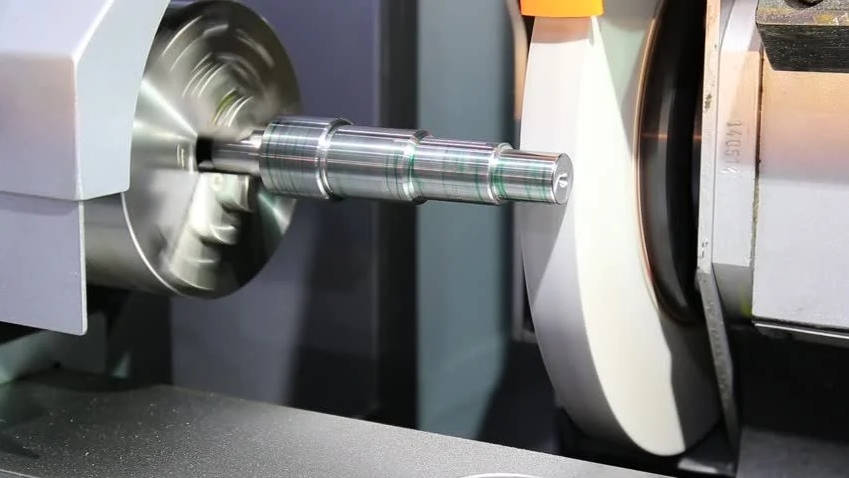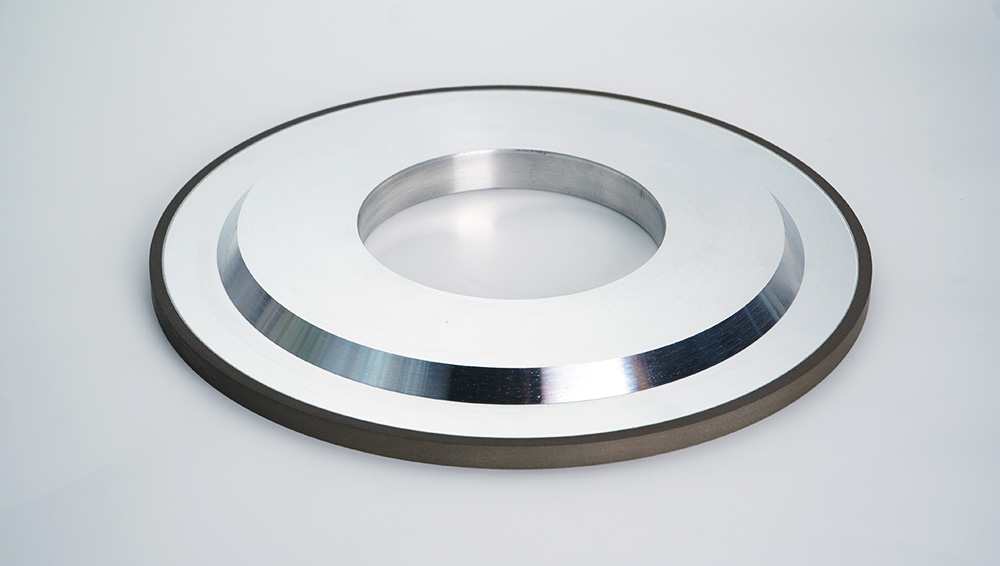Cylindrical grinding is a crucial process in manufacturing. Hence, it helps to shape the outer and inner surfaces of round objects with greater accuracy. This method helps to create precise shapes and smooth surfaces in different industries. Cylindrical grinding wheels are made from abrasive materials. Moreover, they are also an important part of the manufacturing process. The reason behind their importance is that they help remove materials. Knowing about the six types of cylindrical grinding can help improve production. Not only this, it will also help you to ensure high-quality results.
Types of Cylindrical Grinding wheel
Cylindrical Grinding is a machining process for grinding the external and internal surfaces of cylindrical workpieces. As a result, it helps to achieve high precision and smooth finishes. Here are 6 types of cylindrical grinding processes.
External Cylindrical Grinding (OD Grinding)

This process involves grinding the outside diameter of a cylindrical workpiece. It’s commonly useful in industries like automotive and aerospace. Moreover, it helps to create precise components such as shafts and rods. Also, it involves materials like aluminum & titanium due to their widespread industrial applications.
Internal Cylindrical Grinding (ID Grinding)

Unlike OD Grinding, ID Grinding focuses on the internal surfaces of a cylindrical workpiece. It is useful to finish the interior surfaces of components like bearings and bushing. The key difference from OD Grinding is the need for smaller wheels to fit inside the workpiece.
Centerless Grinding Wheel

This unique process doesn’t use a spindle to secure the workpiece. Instead, it is supported between a regulating wheel and a grinding wheel. As a result, it rotates in the same direction. This method is useful in the automotive industry for making cylindrical parts.
Creep-Feed Grinding
This grinding is famous for its deep-cutting capability. Hence, it allows for slow feeding of the workpiece to remove material in a single pass. This method is beneficial for complex shapes and tough materials. These benefits include reduced cycle time and improved surface integrity.
Plunge Grinding
This technique involves the wheel feeding radically into the workpiece without axial movement. It’s used for grinding shoulders or small cylindrical surfaces. Thus, it offers precise control and finish in applications such as manufacturing pins.
Traverse Grinding
In this process, the grinding wheel moves axially along with the workpiece. Due to this, it also helps to create a longitudinal cut. This method differs from plunge grinding by its axial motion. Hence, it is suitable for achieving uniform material removal. Due to this reason, it is used in manufacturing shafts and longer cylindrical parts. Knowing the different cylindrical grinding types ensures that parts are made accurately and with a smooth finish. It is true irrespective of which industry you are using it for.
Key Components of a Cylindrical Grinding Wheel
Cylindrical grinding wheels are important tools used to shape and finish round objects. So, here are the main parts of a cylindrical wheel.
Abrasive Material
These are the tiny, sharp pieces that do the cutting work on the grinding wheel. Common types are aluminum oxide, silicon carbide, and cubic boron nitride (CBN). Hence, harder abrasives are used for tough materials. But the softer ones are for softer metals.
Grit Size
It shows how rough or smooth the abrasive particles are. Coarse grits with low no. remove materials and fine grits with high no. create smooth finishes. Thus, choosing the right grit size is important. It will further help you to balance speed, precision, and surface finish.
Bond Type
The bond holds the abrasive grains together and affects how the wheel performs. Some common bond types include the following:
- Vitrified Bond. Made from clay and glass, it’s rigid and heat and heat-resistant, good for precision grinding.
- Resin Bond. It’s a flexible bond that is ideal for removing material in a quick way.
- Metal Bond. Grinding professionals use this strong and durable bond for tough grinding jobs.
- Electroplated Bond. This bond allows precise attachments of abrasives and is perfect for complex shapes.
You can use these bond types as per your grinding and finishing requirements.
Wheel Shape and Size
Cylindrical grinding wheels come in different shapes and sizes to fit various jobs. So, some common shapes include straight wheels for cylindrical grinding and cup wheels for internal grinding.
Understanding these parts is important for choosing the right grinding wheel for the job. Hence, it ensures efficient and effective results in cylindrical grinding work.
Choosing the Right Cylindrical Grinding Wheel
Choosing the right cylindrical grinding wheel is important. Hence, it helps to get the best performance and results.
Material To Be Ground
The workpiece material determines which abrasives you should use. So, use aluminum oxide for grinding steel and silicon carbide for softer materials. Furthermore, you can use the CBN for hard materials, and diamond for ceramics and carbides.
Desired Finish
You must select the appropriate grit size based on the surface finish you want to achieve. Coarse grits (24-30) are suitable for quick material removal. So, fine grits (80-120) help to achieve smooth finishes.
Grinding Speed and Feed Rate

Optimizing grinding speed and feed rate to balance efficiency and surface quality. Higher speed and feed rates increase productivity. But it may affect the surface finish and wheel quality. Hence, you must adjust these parameters based on the machines’s capabilities.
You must understand these factors and how they work together. It will help you choose the right cylindrical grinding wheel for your specific tasks. As a result, it also helps you to ensure good performance and the results you want to achieve.
Choosing the right cylindrical grinding wheel helps achieve the best results. To do this, you need to know about the material you are working with, the grit size of the wheel, and how to set up your machine properly. This further ensures you get the best results.
Advantages of Cylindrical Grinding
Cylindrical grinding has many benefits that make it a popular choice in the manufacturing industry. So, here are some benefits for you to explore.
Precision and Accuracy
This method helps to create parts with exact measurements and smooth finishes. As a result, it helps to ensure they meet the necessary specifications and work in the best possible way.
Versatility
You can use cylindrical grinding on many materials, like metals and ceramics. Also, professionals use it in many industries, such as car manufacturing and aerospace.
Efficiency
Grinding is good at removing material quickly and consistently. Thus, it is efficient for both large-scale production and small-batch manufacturing. This further boosts productivity and reduces the time required to complete tasks.
Tips for Optimal Cylindrical Grinding Performance
You must follow the tips in this section to get the best results out of your cylindrical grinding wheels.
Proper Wheel Selection
Picking up the right grinding wheel is crucial for the job. So, you must ensure the abrasive material, grit size, and bond type match the material you are working on. Moreover, it will also help you with the finish you want to achieve.
Coolant Use
You should also use the right coolant to reduce heat, improve how well the wheel works, and make it work longer. Coolants will help you keep the workpiece accurate in size. Furthermore, it will help you to prevent heat damage as well.
Regular Maintenance
You must clean and reshape the grinding wheel as well to keep up with its shape and cutting ability. This practice will further help you maintain consistent surface finishes. Furthermore, it will also extend the wheel’s lifespan. Not only this, but it will also help you to improve the grinding performance.
Conclusion
Cylindrical grinding is a crucial manufacturing method. It shapes the outside and inside surfaces of round objects with greater efficiency. This process includes different techniques that shape the outer surfaces. It also includes the internal grinding to shape the inner surfaces. Centerless grinding is efficient for producing many parts.
So, creep-feed, plunge, and traverse grinding are specialized methods for various tasks. To achieve the best result, must select the right grinding wheel based on the material, desired finish, and machine settings. Additionally, using the appropriate coolant and maintaining the wheel properly. Hence, it will ensure effective material removal and high-quality results.



